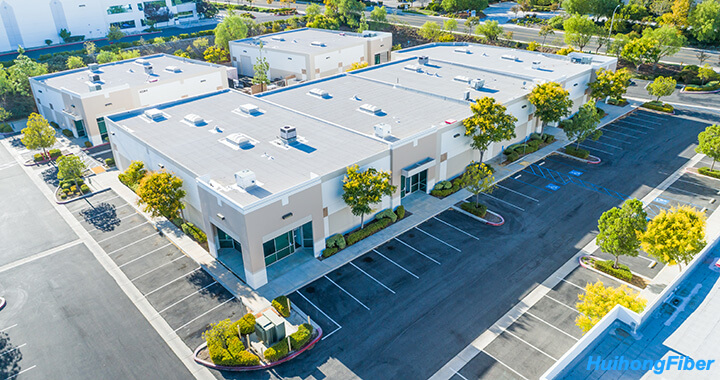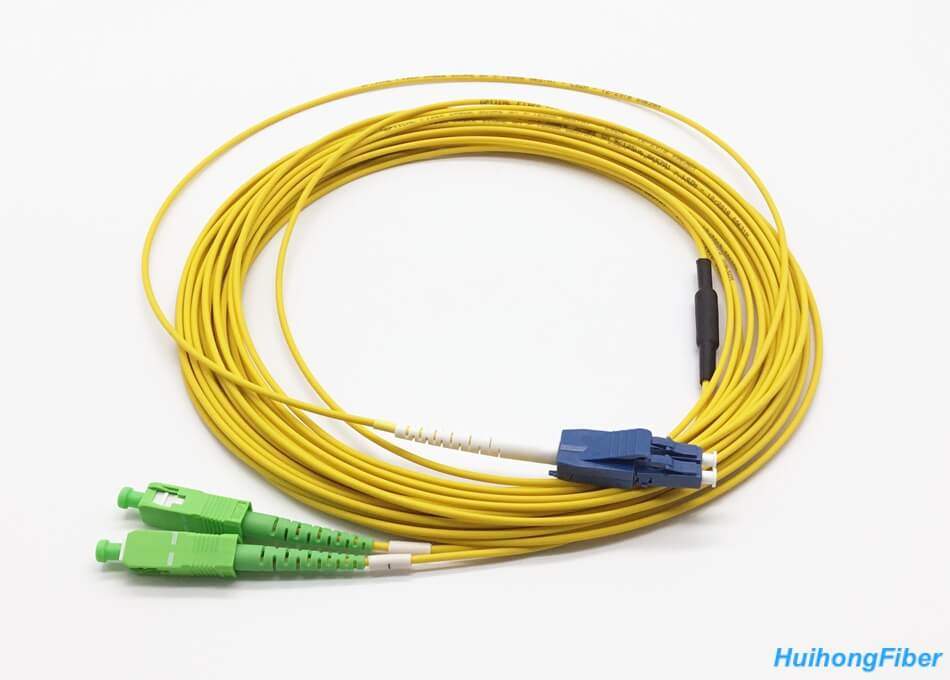The Uniboot LC Reverse Polarity Cable design allows a single cable to transmit two fibers simultaneously, reducing cable congestion during cabling and for high-density fiber wiring that requires space savings and reduced cable management issues in the data center. The antipolar design makes polarity conversion fast and simple without exposing fiber or any tools.
Specifications
| Connector Type | LC to LC | Polish Type | UPC to UPC |
| Fiber Mode | OS2 9/125μm | Wavelength | 1310/1550nm |
| Fiber Count | Duplex | Fiber Grade | G.657.A1(Compatible with G.652.D) |
| Insertion Loss | ≤0.2dB | Return Loss | ≥50dB |
| Attenuation at 1310 nm | 0.36 dB/km | Attenuation at 1550 nm | 0.22 dB/km |
| Minimum Bend Radius | 10mm | Cable Diameter | 2.0mm |
| Pull-out Force | 100N | Durability | 500 Cycles |
| Cable Jacket | PVC | Jacket Color | Yellow |
| Operating Temperature | -40 to 85°C | Storage Temperature | -45 to 85°C |
G.652D is the fiber-optic fiber model in fiber optic cable, representing the non-dispersion displacement single-mode fiber, is currently the most widely used single-mode fiber. Commercially launched in 1983, its scattered wavelength at 1310nm, at 1550nm at the minimum attenuation, but there is a larger positive dispersion, about 8ps (nm/km), the working wavelength can be selected 1310nm, can also choose 1550nm.
This fiber is the most widely used fiber, most of the fiber has been laid, fiber optic cable is most of this kind of fiber. In the late 1970s, attempts were made to replace light-emitting diode light sources with developed long-life semiconductor lasers to obtain longer communication distances and greater communication capacity, but pattern noise occurs when lasers are transmitted in multimode optical fibers. In order to overcome the mode noise, in 1980 successfully developed a single-mode fiber (non-dispersive displacement single-mode fiber), referred to as standard single-mode fiber, which ITU-T recommends as G.652 fiber. Because the design idea of single-mode fiber is to transmit only one mode, there is no mode noise that occurs when transmission occurs in multimode fiber. Therefore, in the mid-1980s, 140Mbit/s optical fiber communication system consisting of laser light source and standard single-mode fiber, in which the relay distance and transmission capacity far exceeded the transmission system of coaxial cable, so that the optical fiber communication system gradually replaced the copper cable communication, becoming the main communication mode adopted in the telecommunications industry.
The G.657 access network with bending attenuation insensitive single-mode fiber optic cable characteristics” is the standard that ITU-T issued in November 2006.
G.657 Fiber is the latest fiber variety developed based on G.652 fiber to achieve the goal of fiber-to-the-home. The main characteristic of this type of fiber is its excellent bending resistance, which achieves a bending radius of 1/4 to 1/2 of the conventional G.652 fiber. G.657 fiber sub-A, B two subcategories, in which G.657A fiber performance and its application environment and G.652D type fiber similar, can be in the 1260 to 1625nm wide wavelength range (i.e. O, E, S, C, L5 working bands) work The G.657B fiber mainly works at 1310nm, 1550nm and 1625nm 3 wavelength windows, which is more suitable for the transmission of FTTH information, installation in the interior or building and other narrow places.
Our data center advanced LC dual-linked Uniboot jumper features fast flip polarity reversal, unique and branded design that eliminates the need for tools and does not require distortion or mobile fiber to achieve polarity reversal.
The Uniboot LC Reverse Polarity Cable comes with a 2.4 mm round double-sided cable or a 2 mm circular double-sided cable in smaller size, providing greater flexibility and space savings.
Our Uniboot LC Reverse Polarity Cables are terminated with high-quality zirconium oxide ceramic case connectors to help ensure high transmission quality and low optical power loss.
Features:
Advanced Polarity Reversible LC Uniboot Connector, Blue (SM) and Light Green (mm)
Enhanced optical performance to meet data center tight power budgets
Standard and reduced bending sensitivity OM3, OM4 and G652D/G657A1 or A2 fiber types
Cable sheaths are yellow (SM), water green (OM3 and OM4) and Erica Purple (OM4); LSZH or OFNR
Full duplex cable with a single core diameter of 2.4 mm or 2.0 mm saves space and flexibility
IEC compliant RoHS-compliant, REACH and SVHC-compliant



